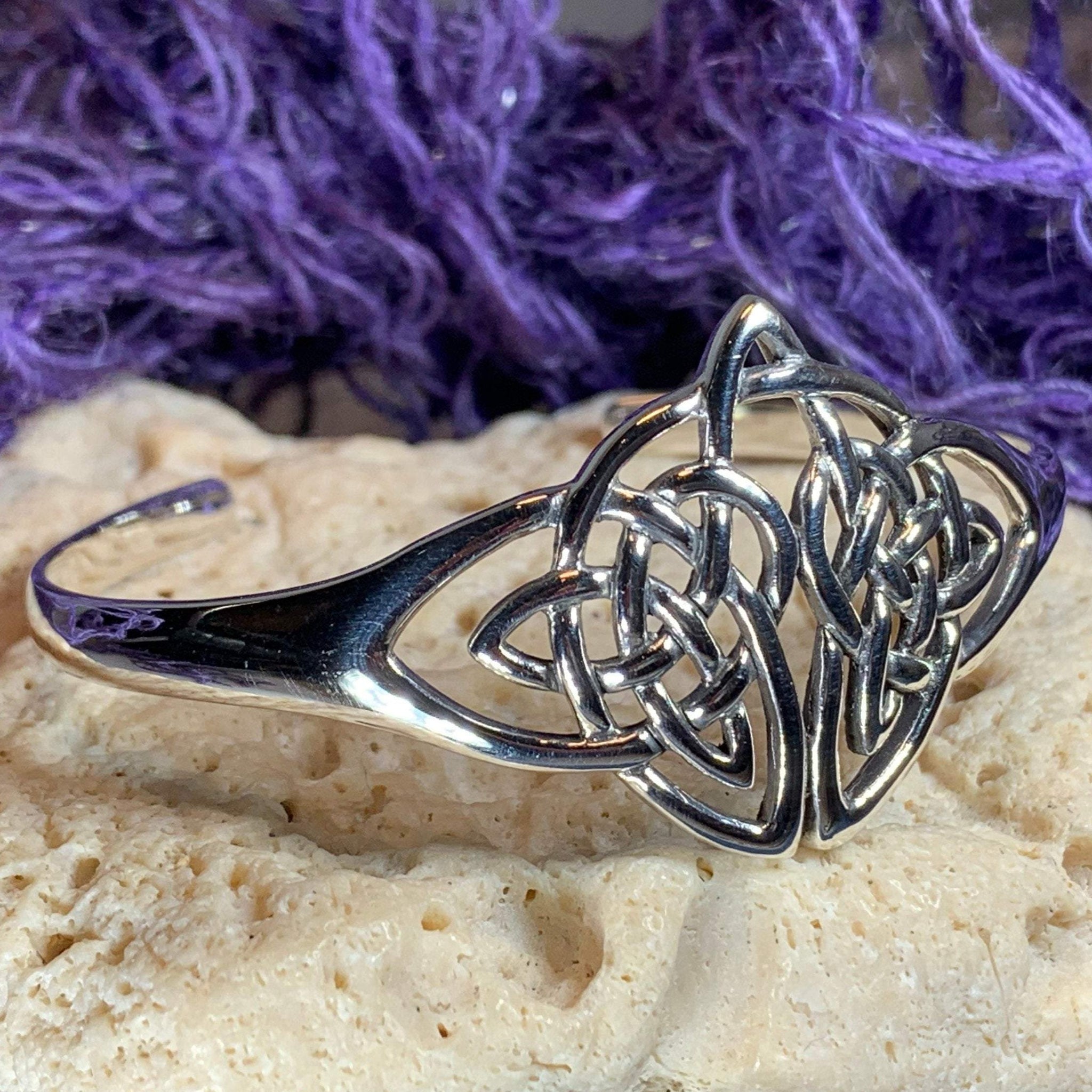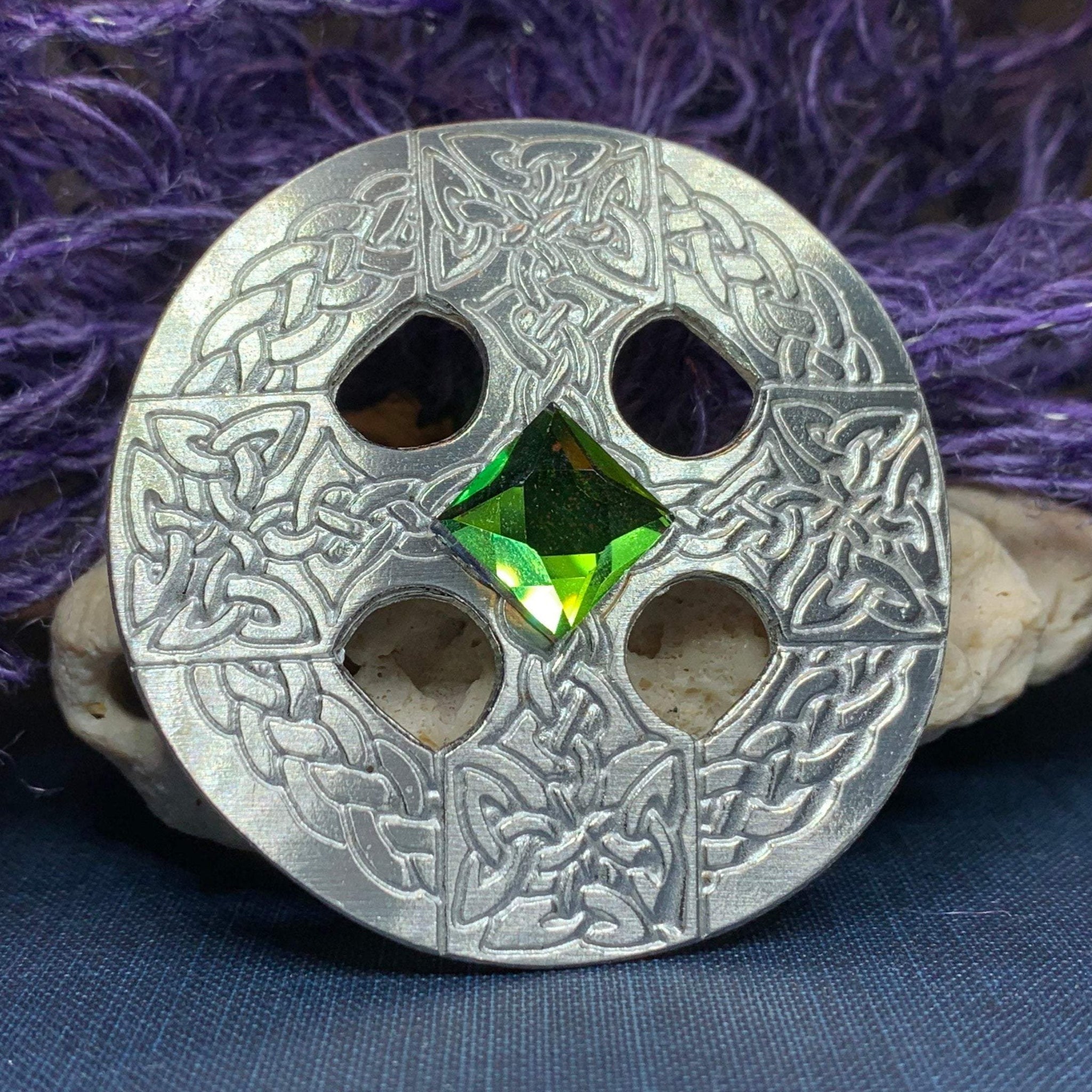History of the Celtic Knot
The history of the Celtic knot is a rich and enduring one, their intricate designs tracing their roots back to the late Roman Empire. Far from mere ornamentation, these endlessly interwoven patterns transcended cultures and eras, evolving into potent symbols of unity, infinity, and spiritual depth.
From pre-Christian origins to their prominent role in modern art and spiritual expression, Celtic knots continue to captivate audiences with their timeless beauty and profound symbolism.
Where Did the History of the Celtic Knot Start?
The captivating Celtic knot, with its intricate lines and endless loops, boasts a long and multifaceted history. Unlike many cultural icons with singular origins, the Celtic knot's story unfolds as a fascinating journey through various influences and artistic evolutions.
The earliest threads of this journey lead us back to the late Roman Empire (4th-5th centuries AD). Here, we see the emergence of interlace patterns in mosaics and decorative arts. While not strictly "Celtic" in style, these intricate designs provided the foundation upon which the distinctive Celtic knot we know today would later flourish.
Fast-forwarding to the 5th and 6th centuries AD, we witness the arrival of Christianity in the Celtic lands. This period marked a significant fusion of Roman and Celtic artistic traditions. Monastic communities readily adopted and adapted the interlace motif, as evidenced in early illuminated manuscripts like the Book of Durrow and the Book of Armagh. It is here that simple interlace patterns began to evolve into more complex and intricate forms.
By the 7th and 8th centuries AD, the Insular style emerged, establishing a truly distinct and recognizable "Celtic" approach to interlace art. This period saw the development of the signature characteristics we associate with Celtic knots today: endless loops, intricate spirals, and tightly woven designs seemingly devoid of beginning or end. These motifs adorned everything from high crosses and metalwork to manuscripts and jewelry, becoming potent symbols of faith and cultural identity.
However, the story doesn't end there. The artistic evolution of the Celtic knot continued to unfold, absorbing influences from symbols and motifs etched on Viking weaponry and art. This ongoing engagement with diverse cultures ensured the continued relevance and richness of the symbolic language woven into the knot's design.
Therefore, while pinpointing a single origin point remains elusive, the history of the Celtic knot reflects a dynamic interplay of diverse cultural influences and artistic expressions.
Read More: 8 Types of Celtic Knots and Their Meanings
What does the History of the Celtic Knot Symbolize?
Beyond their captivating aesthetics, Celtic knots carry many symbolic meanings that have evolved and resonated throughout history. While specific interpretations may vary depending on the individual knot design and cultural context, several core themes consistently emerge:
Eternity and Continuity
The endless loops and interwoven lines of the knot represent the cyclical nature of life, death, and rebirth. This symbolizes infinity, the interconnectedness of all things, and the enduring spirit beyond physical life.
Faith and Spirituality
Early Christian communities readily adopted the knot motif, often incorporating it into religious art and iconography. In this context, the knot came to represent faith, spiritual commitment, and the interconnectedness of humanity with the divine.
Loyalty and Unity
The interlaced lines, seemingly inseparable, symbolize the strength and enduring nature of bonds between individuals, families, and communities. It represents loyalty, friendship, and the interconnectedness of social groups.
Love and Protection
Certain knot designs, like the Celtic love knot, feature two interwoven hearts signifying a deep and enduring love between two individuals. In some cultures, knots also served as protective amulets, warding off evil and ensuring the safety of loved ones.
Nature and Balance
Many Celtic knots incorporate spirals and other organic forms, reflecting a connection to the natural world and its inherent cycles. This represents balance, harmony, and the interconnectedness of humanity with the natural world.
The History of the Celtic Knot in Art
Far from mere decoration, the Celtic knot transcended its visual appeal to become a deeply embedded symbol within artistic expression throughout history. Its presence can be found adorning various forms of art, each serving as a testament to its cultural significance and evolving meaning.
Religious Buildings
High crosses, monumental structures often found in Ireland and Scotland, frequently employed the intricate patterns of Celtic knots. These crosses functioned as both religious markers and artistic showcases, with the knots symbolizing faith, eternity, and divine protection. Examples include the Cross of Muiredach at Monasterboice and the Kilbride High Cross, where the knots intertwine with biblical narratives and figures.
Tombstones
Celtic knots adorned funerary monuments, reflecting the belief in an afterlife and the interconnectedness of the living and the departed. The spirals and endless loops within the knots symbolized continuity, the soul's eternal journey, and the enduring connections between generations.
Manuscripts
Illuminated manuscripts, like the famed Book of Kells, served as repositories of religious texts and artistic splendor. Within these vibrant pages, Celtic knots played a key role in embellishing the text, framing illustrations, and marking significant passages. These intricate designs not only added visual beauty but also conveyed deeper spiritual meanings, highlighting the sacred nature of the written word.
Jewelry
From intricate bracelets to simple pendants, Celtic knots found their way onto personal adornments. These wearable pieces served as expressions of faith, cultural identity, and personal beliefs. The knots symbolized love, loyalty, and protection, becoming cherished possessions passed down through generations.
Book of Kells
This masterpiece of Insular art deserves special mention for its groundbreaking use of Celtic knots. The intricate interlace patterns adorn almost every page, seamlessly blending with geometric forms and zoomorphic designs. The Book of Kells exemplifies the artistic mastery achieved in incorporating the knot into religious texts, elevating its symbolic representation to new heights.
Conclusion
Beyond their intricate aesthetics, Celtic knots carry a profound message of unity, continuity, and interconnectedness. Originating among the ancient Celtic tribes of Europe, these symbols have transcended temporal and cultural boundaries, leaving a lasting impact on art, spirituality, and even contemporary culture.
By delving into the intricate fabric of their history and symbolism, we uncover a powerful reminder: like the knot's unbroken lines, all elements within the world are intrinsically linked. Ultimately, the Celtic knot serves as a timeless emblem of the human spirit's enduring pursuit of meaning, unity, and the cyclical nature of life.






